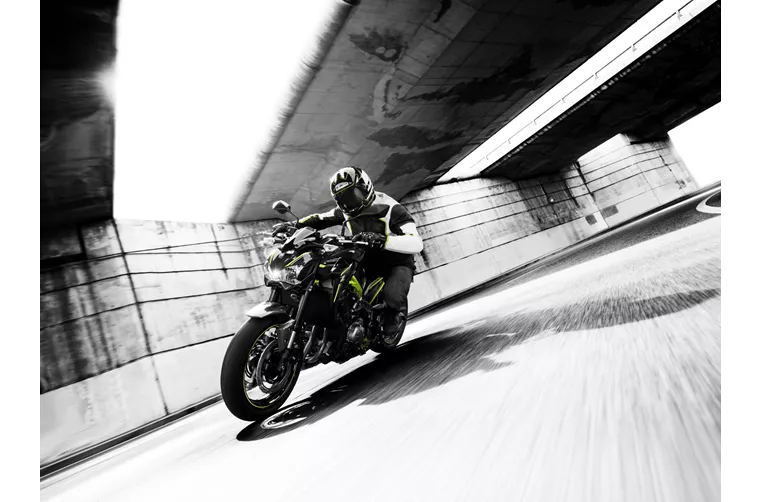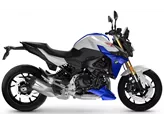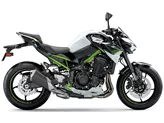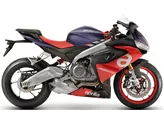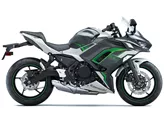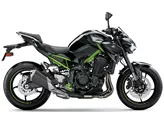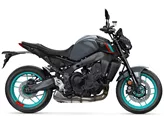Kawasaki Z900 2018 vs. Kawasaki Z900 70kW 2020

Kawasaki Z900 2018
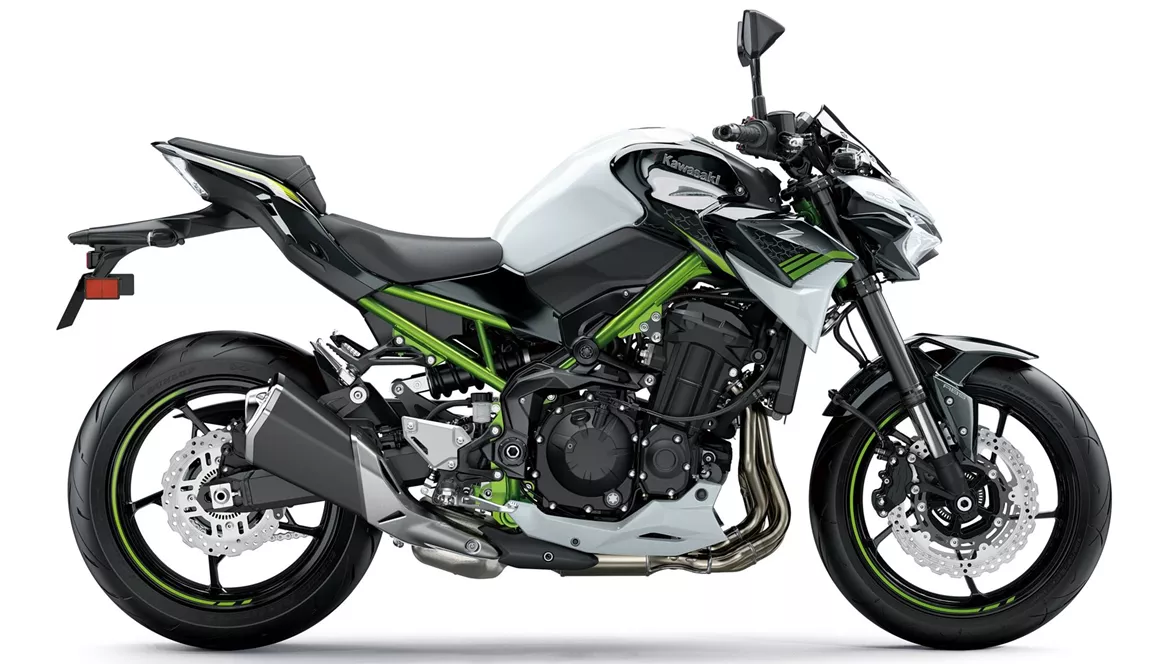
Kawasaki Z900 70kW 2020
Overview - Kawasaki Z900 2018 vs Kawasaki Z900 70kW 2020
The Kawasaki Z900 model year 2018 and the Kawasaki Z900 70kW model year 2020 are both naked bikes with similar technical specifications. They both have an in-line engine with a displacement of 948ccm and a liquid cooling system. The engine power of the Z900 2018 is 125.4 HP, while the Z900 70kW 2020 has a slightly lower power of 95 HP. The torque of the Z900 2018 is 98.6 Nm, whereas the Z900 70kW 2020 has a torque of 91.2 Nm.
Both models have a double cradle steel frame and similar suspension systems. The front suspension consists of an upside-down telescopic fork with preload and rebound adjustment, while the rear suspension is a swing arm with a monoshock and preload and rebound adjustment. The rear suspension material is aluminum in both models.
In terms of braking, both models have double disk brakes with a diameter of 300 mm and four pistons. The braking technology is petal in both cases. Additionally, both models are equipped with ABS as an advanced rider assistance system.
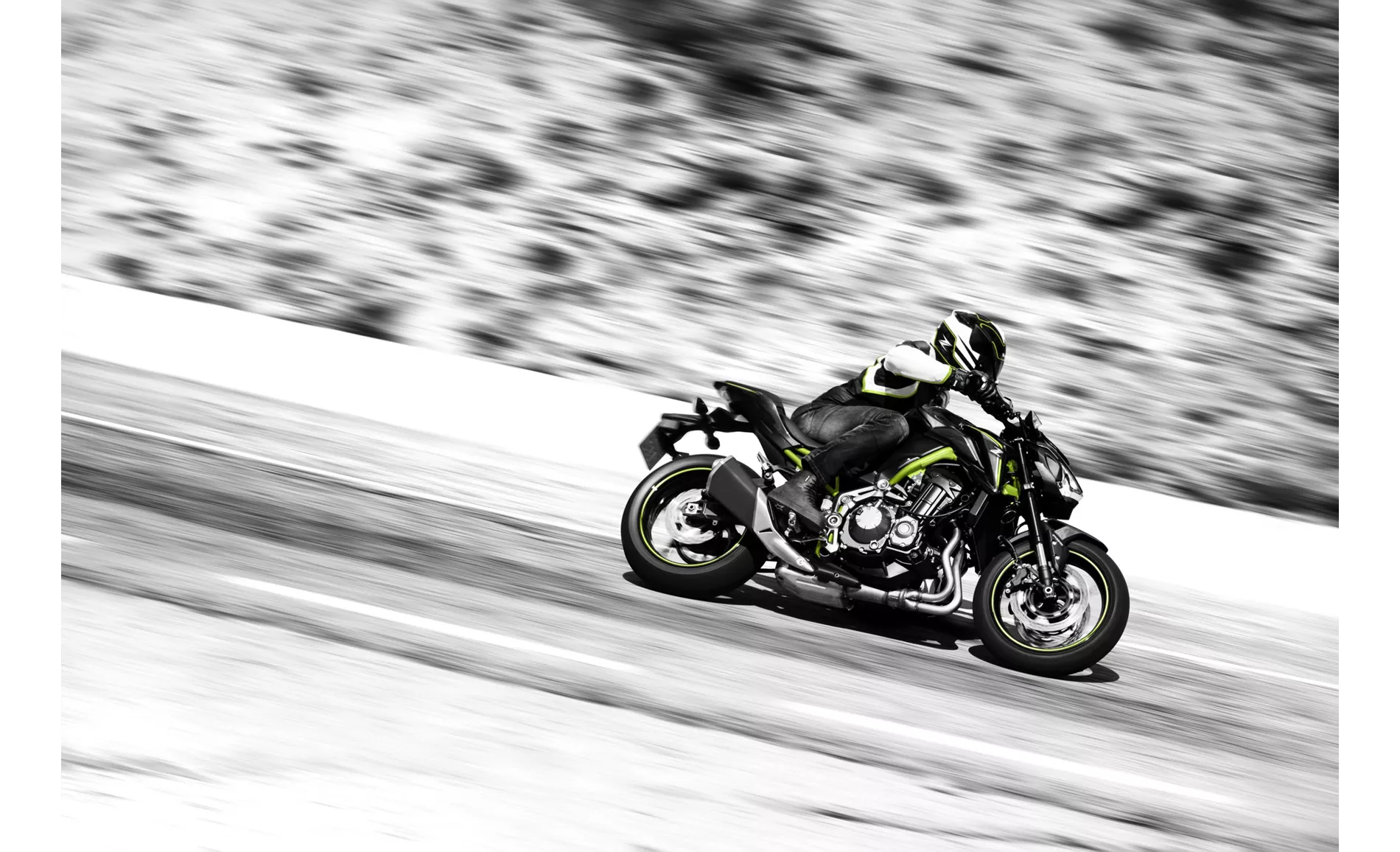
Kawasaki Z900 2018
The dimensions and weights of the two models are also identical. They both have a front tire width of 120 mm and a rear tire width of 180 mm, with a diameter of 17 inches for both front and rear tires. The wheelbase is 1450 mm and the seat height is 795 mm. The kerb weight, including ABS, is 210 kg for both models.
Now let's compare the strengths and weaknesses of each model. The Kawasaki Z900 2018 is praised for its powerful and silky engine, great sound, and sharp, sporty look. It also has a low seating position, which contributes to easy handling and maneuverability.
On the other hand, the Kawasaki Z900 70kW 2020 is considered to have enough power, even with throttle restrictions. It is also praised for its great handling, good equipment, and aggressive look. Many riders also find it to be a good value for money.
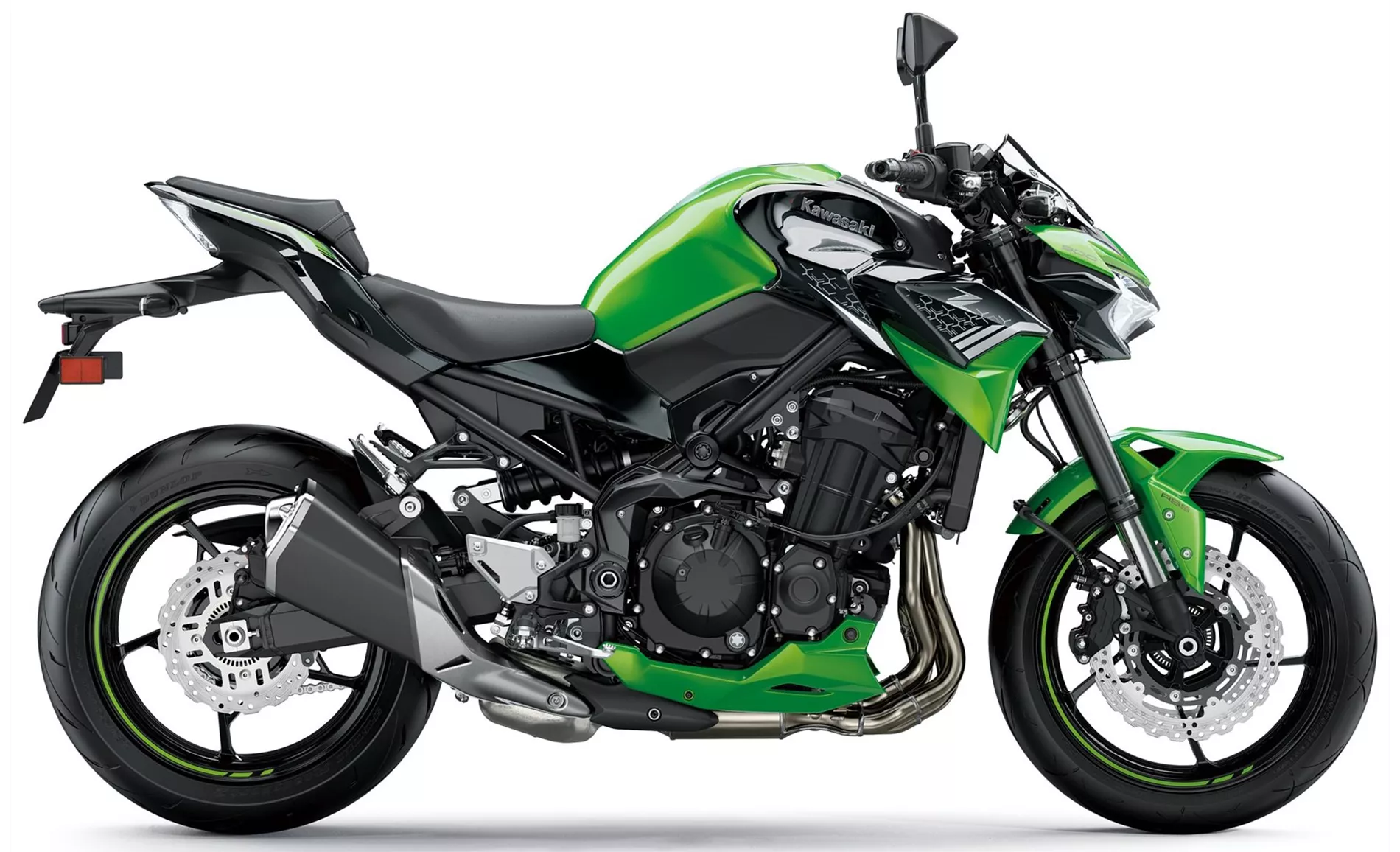
Kawasaki Z900 70kW 2020
However, the Z900 2018 does have some weaknesses. It lacks traction control, which can be a disadvantage in certain riding conditions. Additionally, tall riders may find the knee angle strenuous in the long run.
As for the Z900 70kW 2020, some riders find the menu navigation somewhat tiring, which can be a minor inconvenience. Another drawback is the missing quickshifter option, which could enhance the overall riding experience.
In conclusion, both the Kawasaki Z900 2018 and the Kawasaki Z900 70kW 2020 are powerful naked bikes with similar technical specifications. While the Z900 2018 has a more powerful engine and a sportier look, the Z900 70kW 2020 offers good power and handling, along with additional features such as riding modes, ride by wire, and traction control. Ultimately, the choice between the two models depends on the rider's preferences and priorities.
Technical Specifications Kawasaki Z900 2018 compared to Kawasaki Z900 70kW 2020
Pros and Cons in comparison
Pros and Cons in comparison
Kawasaki Z900 2018
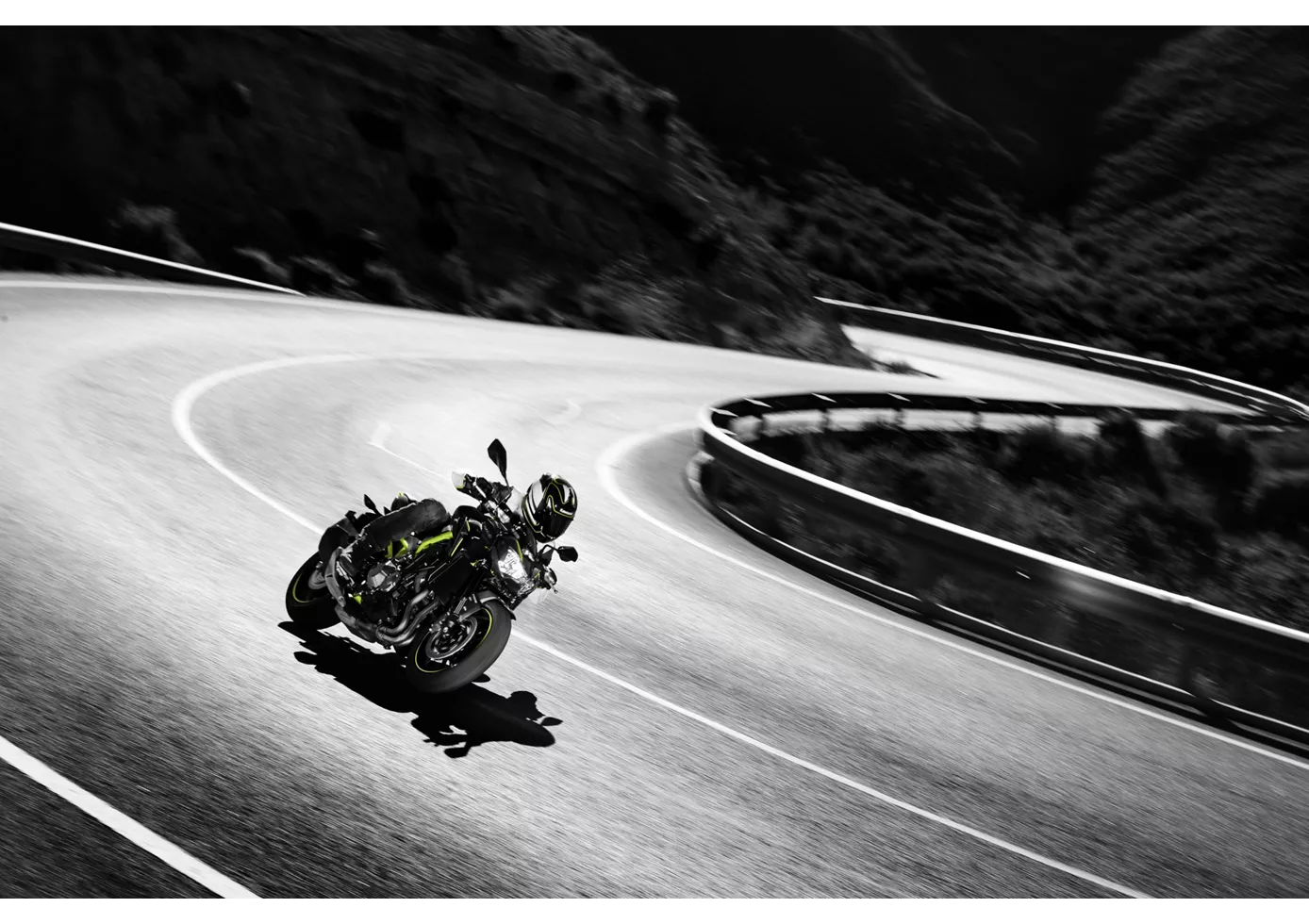
In the hotly contested naked bike segment, the Z900 plays right at the front. Above all, its engine is absolutely terrific, runs incredibly silky and offers rich power in all rev regions - as befits a Japanese four-cylinder. Its sporty, aggressive appearance matches this. It does without electronic bells and whistles, but still conveys a lot of confidence when chasing corners, braking and accelerating out of them. The low seat is especially beneficial for smaller riders, but taller riders might miss a flatter knee angle on long distances. The low weight and compactness make the Z900 particularly agile and easy to handle. A sporting cannon that is also extremely appealing in terms of price
Kawasaki Z900 70kW 2020
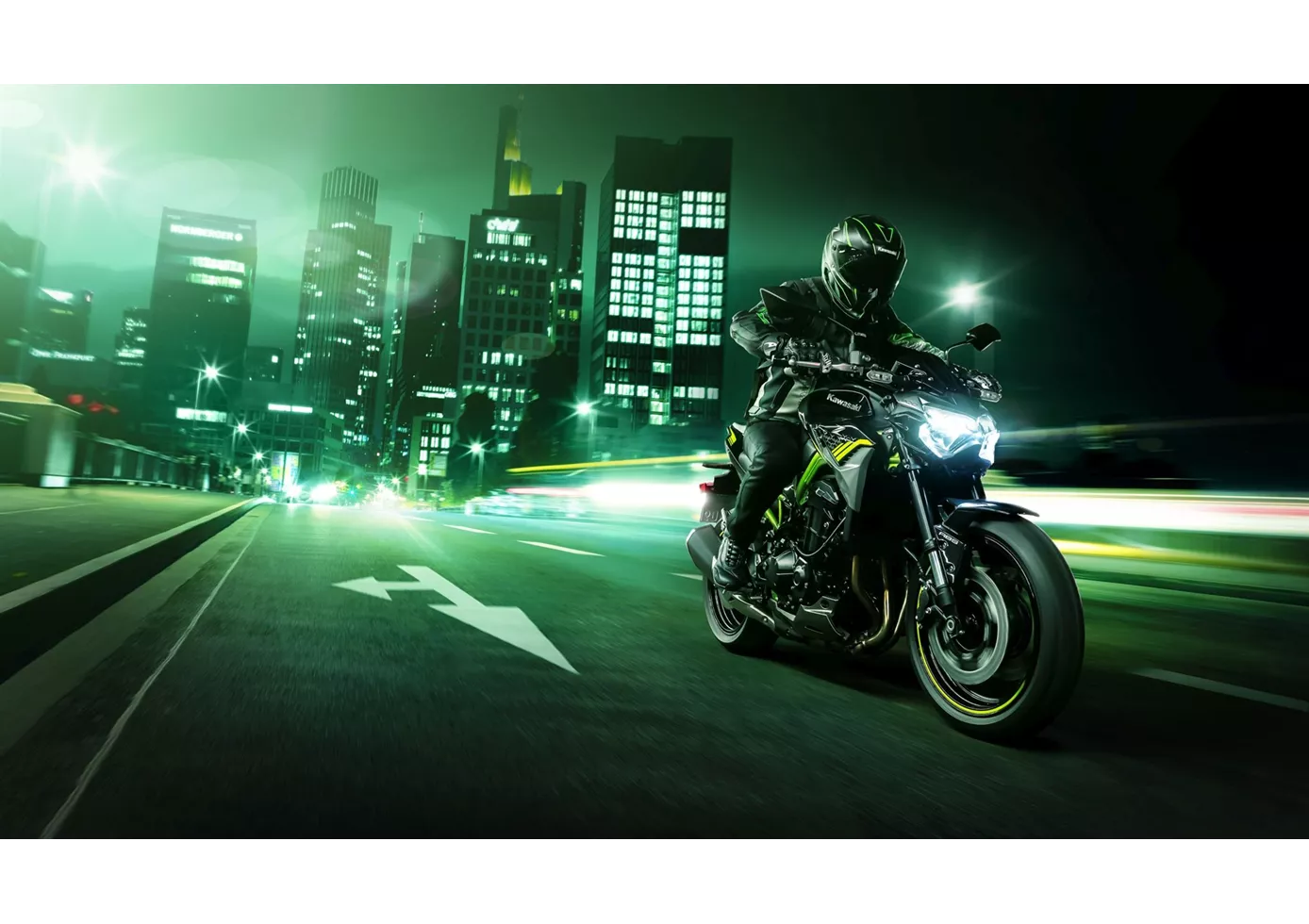
Whether you ride it with 70 kW, or in a further throttled 35 kW version: The Kawasaki Z900 is on a par with its open version - just with less power. That's why you can also be happy about the great handling and the updated electronics package for 2020. There's also good news about the engine. Even with 95 hp, the Kawa pulls tight on the chain and will give pleasure for many seasons! A bike you can grow with!
Price Comparison Avarage Market Price Kawasaki Z900 vs Kawasaki Z900 70kW
There are a few key differences between a Kawasaki Z900 2018 and a Kawasaki Z900 70kW 2020. In terms of price, the actual average price of a Kawasaki Z900 2018 is about 2% higher. Compared to Kawasaki Z900 70kW 2020 there are more Kawasaki Z900 2018 bikes available on the 1000PS.de Marketplace, specifically 55 compared to 5. It takes less time to sell a Kawasaki Z900 with 112 days compared to 197 days for a Kawasaki Z900 70kW. Since model year 2017 1000PS.de editors have written 46 reviews for the Kawasaki Z900 and 10 reviews for the Kawasaki Z900 70kW since model year 2018. The first review for the Kawasaki Z900 was published on 11/11/2016 and now has more than 93,200 views. This compares to more than 104,300 views for the first review on Kawasaki Z900 70kW published on 11/23/2018.
